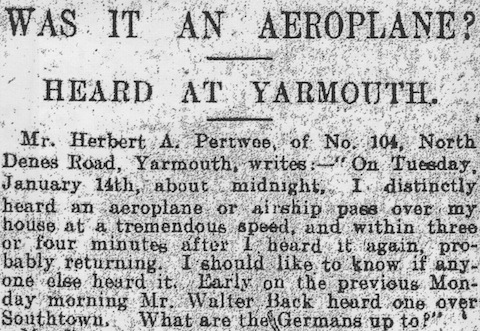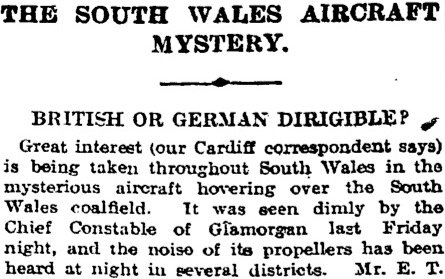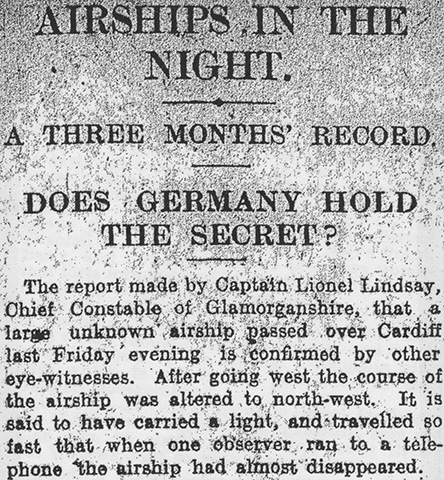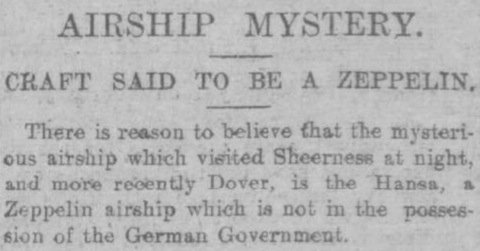Saturday, 25 January 1913
The Norfolk News, Eastern Counties Journal, and Norwich, Yarmouth, and Lynn Commercial Gazette, presumably universally known as the Norfolk News, today carries the usual paragraph about the Cardiff airship sighting. Unsurprisingly, it pays considerably more attention to the mystery aircraft heard locally at Yarmouth at midnight last week (above, p. 10). It reproduces Herbert Pertwee’s […]








